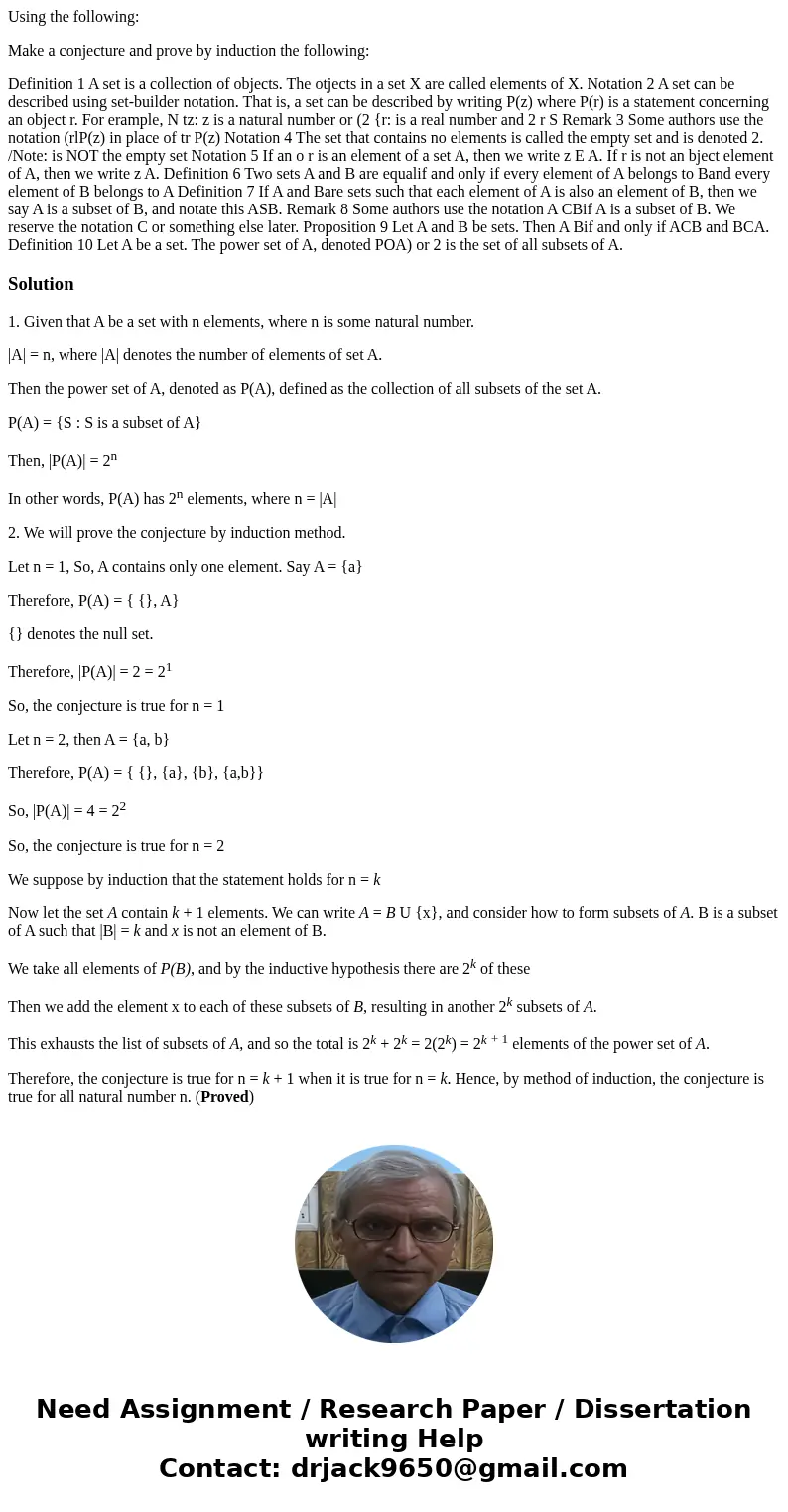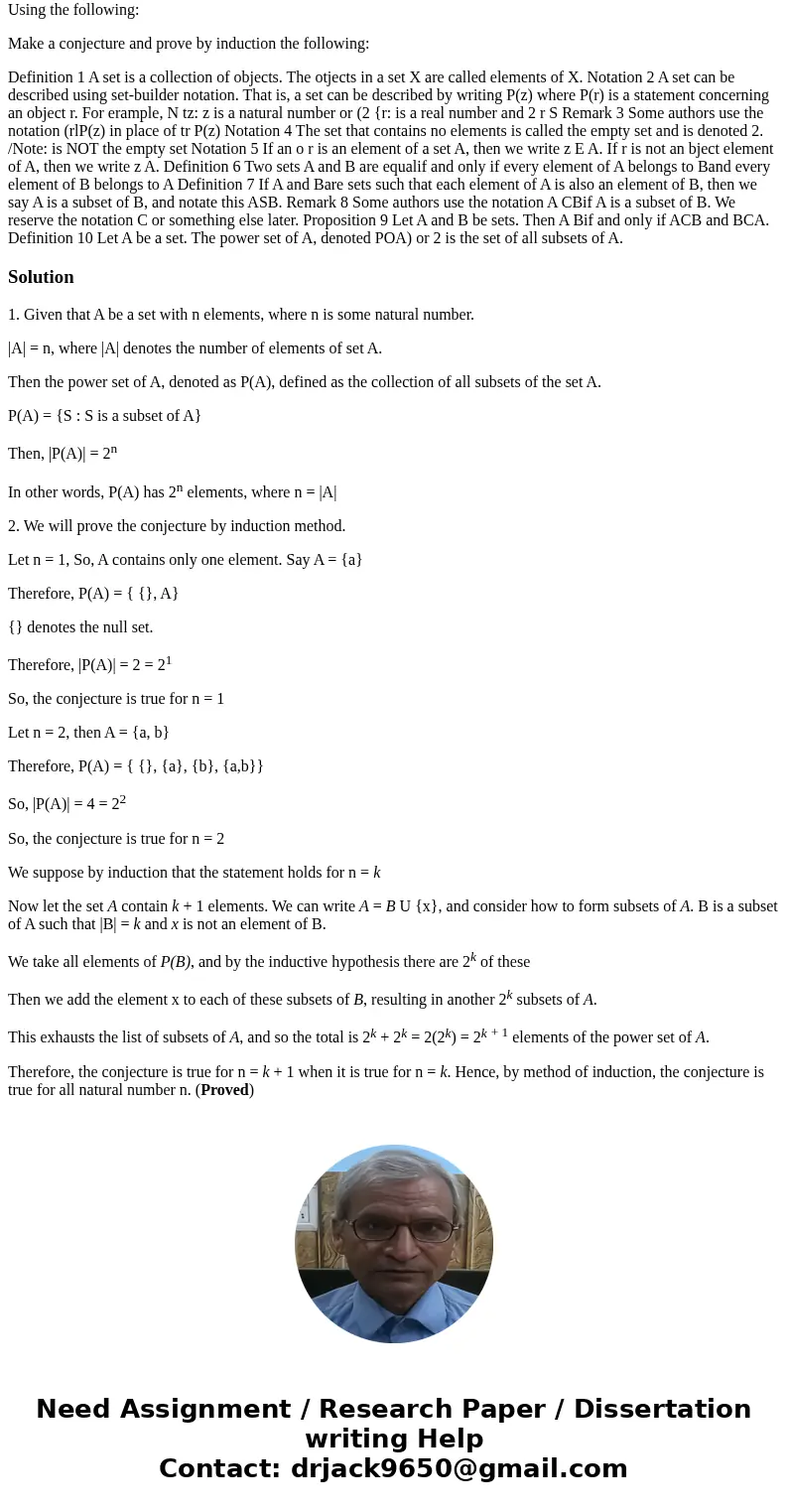Using the following Make a conjecture and prove by induction
Using the following:
Make a conjecture and prove by induction the following:
Definition 1 A set is a collection of objects. The otjects in a set X are called elements of X. Notation 2 A set can be described using set-builder notation. That is, a set can be described by writing P(z) where P(r) is a statement concerning an object r. For erample, N tz: z is a natural number or (2 {r: is a real number and 2 r S Remark 3 Some authors use the notation (rlP(z) in place of tr P(z) Notation 4 The set that contains no elements is called the empty set and is denoted 2. /Note: is NOT the empty set Notation 5 If an o r is an element of a set A, then we write z E A. If r is not an bject element of A, then we write z A. Definition 6 Two sets A and B are equalif and only if every element of A belongs to Band every element of B belongs to A Definition 7 If A and Bare sets such that each element of A is also an element of B, then we say A is a subset of B, and notate this ASB. Remark 8 Some authors use the notation A CBif A is a subset of B. We reserve the notation C or something else later. Proposition 9 Let A and B be sets. Then A Bif and only if ACB and BCA. Definition 10 Let A be a set. The power set of A, denoted POA) or 2 is the set of all subsets of A.Solution
1. Given that A be a set with n elements, where n is some natural number.
|A| = n, where |A| denotes the number of elements of set A.
Then the power set of A, denoted as P(A), defined as the collection of all subsets of the set A.
P(A) = {S : S is a subset of A}
Then, |P(A)| = 2n
In other words, P(A) has 2n elements, where n = |A|
2. We will prove the conjecture by induction method.
Let n = 1, So, A contains only one element. Say A = {a}
Therefore, P(A) = { {}, A}
{} denotes the null set.
Therefore, |P(A)| = 2 = 21
So, the conjecture is true for n = 1
Let n = 2, then A = {a, b}
Therefore, P(A) = { {}, {a}, {b}, {a,b}}
So, |P(A)| = 4 = 22
So, the conjecture is true for n = 2
We suppose by induction that the statement holds for n = k
Now let the set A contain k + 1 elements. We can write A = B U {x}, and consider how to form subsets of A. B is a subset of A such that |B| = k and x is not an element of B.
We take all elements of P(B), and by the inductive hypothesis there are 2k of these
Then we add the element x to each of these subsets of B, resulting in another 2k subsets of A.
This exhausts the list of subsets of A, and so the total is 2k + 2k = 2(2k) = 2k + 1 elements of the power set of A.
Therefore, the conjecture is true for n = k + 1 when it is true for n = k. Hence, by method of induction, the conjecture is true for all natural number n. (Proved)


 Homework Sourse
Homework Sourse